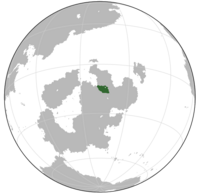Ashmala
Sultante of Ashmala السلطنة أشمالة (Ashmalan) As-Sulṭanat Ashmala | |
|---|---|
| Anthem: Glory to the Sultan | |
 | |
| Capital and largest city | Meena |
| Official languages | Ashmalan |
| Ethnic groups (2022) |
|
| Religion (2020) |
|
| Demonym(s) | Ashmalan |
| Government | Federal parliamentary constitutional elective monarchy |
• Sultan | Muhammed XI |
• Wazir | Muhammed Al-Gazira |
| Hammad Al-Zaqri | |
| Osama II | |
| Legislature | National Council |
| Royal Council | |
| General Assembly | |
| Establishment | |
• Independence | 4 July 1985 |
| 3 July 1986 | |
| 19 February 1993 | |
| Area | |
• Total | 297,971 km2 (115,047 sq mi) |
| Population | |
• 2023 estimate | 39,300,000 |
• 2020 census | 38,805,092 |
• Density | 130.23/km2 (337.3/sq mi) |
| GDP (nominal) | 2022 estimate |
• Total | |
• Per capita | |
| Gini (2022) | high |
| HDI (2022) | high |
| Currency | Ashmalan Yenaholi (¥) (ASS) |
| Date format | dd-mm-yyyy |
| Driving side | left |
| Calling code | +970 |
| ISO 3166 code | AM |
| Internet TLD | .am |
Ashmala, officially the Sultante of Ashmala, is a country in northern Galia. It borders Sahilban to the east, Dejer to the north, Dumatina to the south, and Onhsanenea to the west. In addition, Ashmala has a strip of coastline along the Achrinian Ocean. Its capital and largest city is Meena, which lies along the northwestern coast. Ashmala covers an area of 297,971 square kilometers and has a population of about 39.3 million with one of the highest population densities in Galia. The country is organized as a federal state, with 29 governorates. It is a constitutional monarchy, with a sultan as head of state. However, the sultan's powers are limited and real executive power lies in the wazir, who is elected by a democratically elected parliament.
The territory of what is now Ashmala has historically been inhabitated by nomadic groups and empires. In antiquity, various Sahilban and Ashmalan empires inhabitated the land and fought for primacy in the region, and the Aravian Empire expanded to cover most of what is now Sahilban, Balbaher, and Ashmala. The Aravian Empire modernized much of Ashmala and the empire built its lines down the relatively centralized and well organized lines of the Ashamalan empires which were absorbed by the Aravian Empire. In the 18th century, Tiryetsan-speaking colonists from Gryva arrived and introduced the Islam and Druze faiths to the region. By the mid-19th century, the Tiryetsans nominally ruled all of Aravia as part of a puppet state headquartered in Yenrazi. Following the First Great War, the Tiryetsan colonies went independent and became aligned with the Yawatha. In 1938, in a questionable annexation, Aravia was annexed as the Aravian Autonomous Republic within the Yawathan National Republic. During the dissolution of Yawatha, Aravia split into three countries down the roughly linguistic groups.
The majority of the population are ethnic Ashmalans, with minorities of Syritsi, Yawathans, Sahilbanese, Dimibts, and Onhsaneneans present. The majority language of the population is Ashmalan. While linguistic minorities are present, Ashmalan is the only language used in education as no other languages are recognized. This has resulted in several minority languages effectively being limited to home life. In addition, many demographers believe undercounts of Sahilbanese, Balbahers, and other related groups are occuring due to these groups being ethnically and linguistically related to Ashmalans. This has resulted in these groups often integrating with or, if of mixed ancestry, identifying as Ashmalans, rather than their native group and language. This phenomenon is blamed on a lack of knowledge of ancestry, deliberate attempts to integrate, or the difficulties in drawing firm divisions among highly similar and related ethnic and linguistic groups, as the Aravian languages primarily exist on a dialect continuum.
Ashmala is a regional and middle power and is also classified as an emerging power and plays a major role in the Galian Entente. Categorized as a developing country, the country has made signifigant strides in reducing crime, poverty, and corruption, but major issues exist, including increasing social inequality. The country's economy is primarily built off of the extraction of minerals such as copper, lithium, and oil, and agricultural goods, being recognized as a major producer of beef, pineapples, and citrus fruits. The Ashmalan government is considered democratic with elections recognized as being both free and fair. However, extreme corruption permeates the political system and legislative process. It is a member of the Galian Entente and Global Communiy. Ashmala plays a major role in the ongoing Entente interventions in the Dejerian Civil War and Dumatina Conflict.
